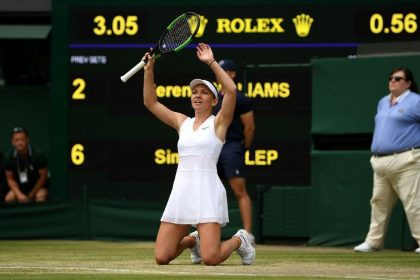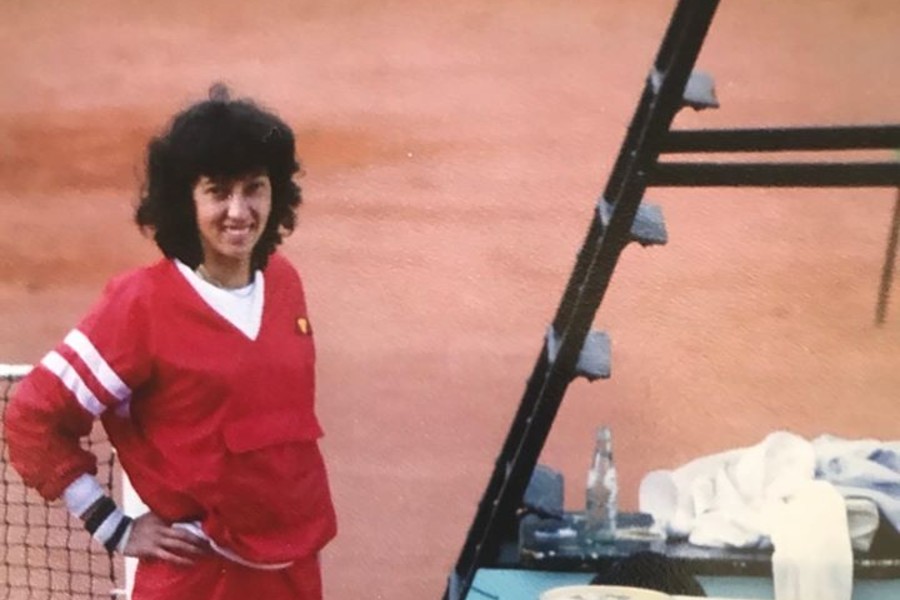UbiTennis has interviewed Virginia Ruzici, the 65-year-old former French Open champion from Romania who has been Simona Halep’s manager since 2008. Now living in Paris with her German husband, she reached the eighth spot in the women’s rankings after her win at Roland Garros in 1978. She reached the final once more two years later, losing to Chris Evert, a bonafide nightmare of an opponent for her, and she also made the semis in 1976, while she reached the quarters at least once in each of the four Majors.
After hanging her racquet for good, she began a management career, working for the Milan Open and IMG, before becoming Simona Halep’s manager in 2008, fetching her partnerships with brands like Lotto, Nike, and Wilson.
However, her early steps in professional tennis were humble to say the least: “In my late teens, I started to travel around Europe with Mariana Simionescu and Florenta Mihai (also top professionals from Romania), and we were always broke, and not just us – Ion Tiriac, later on my manager and now a billionaire, was always looking for ways to eke out a living in those days.
“We had some custom-made Romanian outfits, and we tried to sell them to pay for our hotel rooms, and on a couple of occasions we accepted to be umpires in France for the equivalent of one or two pounds. When we went to the US for the first time, at the beginning we couldn’t even afford to have our own rooms, and the North American swing lasted for four months back then, so we had better make some money quickly!”
Mariana Simionescu, Bjorn Borg’s first wife, was a particularly close acquaintance of Ruzici’s, her perennial roommate and a peer in the political struggles that Eastern Europeans faced back then when crossing over the Iron Curtain: “When we got to a European city, we immediately had to go to the consulate of the next country on our schedule in order to get a visa. So, if we went to Hamburg, I immediately went to the Italian consulate to get a permit to go to Rome the ensuing week.”
Ruzici spent seven straight years in the world Top 20 and won 12 official titles. However, she is adamant that her real tally is miscalculated: “I actually won fourteen tournaments. For some reasons, my wins in Gstaad, Bastad, and Zurich aren’t counted, while I’ve been attributed three wins in Kitzbuhel, where I only scored a brace.”
Her era was dominated by two of the greatest players of all time, Martina Navratilova and Chris Evert. The latter was a particularly tough client for the clay-court specialist, being probably the greatest female player to ever lace up on the surface: “I’ve never won against Chris, out of over 20 meetings. She was always too good for me, especially from a mental standpoint. I was an attacking player, and she just grinded me down on every single point, it was exhausting.
“I’ve never got a win against Martina either, at least officially, since I managed to defeat her during an exhibition match in Turin, and another time I also had a 2-5, 15-40 lead in the third against her in Dallas. Honestly, I wish I’d faced her on clay, because I think I could have brought the challenge to her – the only time we played a ‘clay’ match, we were in today’s Ukraine, and she was 16 or something, but the surface was this yellowish mud that I wouldn’t really call clay.”
Despite never vanquishing her biggest foes, she still racked up quite an impressive list of Top 10 victims, among which she mentions Andrea Jaeger (now an Episcopal preacher), Brit Sue Barker, Hana Mandlikova, Helena Sukova, Wendy Turnbull, and Dianne Fromholtz.

Nowadays, her name is inextricably tied to that of Simona Halep, whom she’s represented since 2008. Ironically, she was initially reluctant to take the job, because after five years with IMG (before that she worked for the Milan Open, spearheading the only women’s edition of the tournament, in 1991, and for Eurosport France) she was tired of being a manager. However, when an Italian promoter, Cino Marchese, counseled otherwise, and after she saw the strides that the teenager had made since she had last seen her, she realised that her fellow countrywoman had what it took to climb the rankings and accomplish something special.
Speaking four languages (Romanian, French, Italian, and English), she immediately started to plant the seeds for some remunerative partnerships, but at first it was hard to get some sponsors to raise their antennae for a diminutive-albeit-pugnacious Eastern European newcomer, even though she had won the Junior French Open right after Virginia came on board. Her first contract was with Lotto, an Italian brand, quite popular in tennis but a far cry from her current Nike deal, which, along with Wilson and a few other contracts, made her the fourth wealthiest female athlete in the world in 2019.
Sure, football die-hard Halep had a contentious relationship with grown-up Slams at first, losing her first three finals, one of them as the overwhelming favourite in Paris against Jelena Ostapenko. Ruzici is unsure whether that was ever a problem: “She lost the first one against Maria Sharapova, who had already won in Paris and who is someone who knows how to bag a Major, and the Australian one against Wozniacki was a nail-biter, ending 7-5 in the third against a former world champion, so they were understandable defeats. It is true, though, that she was crushed after the Ostapenko fiasco, because she was 6-4 3-0 up and suddenly choked, so it might have been a problem at some point.”
Halep finally broke the spell at the 2018 French Open, where she came back to defeat Sloane Stephens, and fulfilled a lifelong dream by winning Wimbledon last year, literally obliterating Serena Williams with a double 6-2 in barely over 50 minutes. Even her mentor was stunned: “She played the match of her life, no doubt about that. Serena had everything to lose, playing for the Slam record, but she admitted herself that she’d never seen Simona play that way, every shot she hit landed exactly where she wanted it to, it was a sight to behold.”
As to why her protégé peaked at the right time, she has a clear explanation: “In the first round, she played a very tight match against another Romanian, Mihaela Buzarnescu, and she might very well have lost that one, and the same goes for most of her matches. Playing such close-call encounters, she felt liberated, and also spent a lot of time on the court, so by the time she played Serena, she was… serene, and her fitness level was superb.”
The Covid-19 hiatus might have been a blessing in disguise for Halep, who injured her foot in Dubai and, according to her manager, would have needed to rest for one or two months anyway. She started to train at her usual pace a month ago, working exclusively on clay due to her affinity with the surface and due to the cheaper price it takes on her joints. Apparently, her training program wasn’t hindered by her coach, Darren Cahill, being unable to fly over from Australia: “She just streams her sessions for him, and he can instruct the on-site coaches to have her do certain drills or others – it’s a bit different than my playing days!”
The world N.2 is scheduled to be the marquee attraction at the first event after play resumes, in Palermo (although Ruzici is non-committal on the issue, she says that hopefully she’ll be ready), and even after then the situation is not very clear, given the spike in Coronavirus cases in the US, a potentially damning blow for Flushing Meadows’ hopes of attracting the best European players: “It’s too early to make a decision, right now she would have to quarantine for two weeks after coming back from New York, so it’s a difficult situation. I’m more optimistic with regards to the French Open, I live in Paris and still wear a mask in public, but the situation has improved a lot and I think that a 50-60% capacity event might actually happen.”
Halep’s ranking is now safe, since her Wimbledon haul will last for one more year, but will she still be at the top for a long time, especially in the wake of what Andy Murray has been saying about a narrowing window for success for older players? “I don’t see her doing what Federer or Serena do, world-class at 38, but I’m sure she’ll still be competing for the biggest prizes in her early-to-mid thirties – don’t forget that she is only going to turn 29 on September 27.”
However Halep’s career progresses from now on, her society with Ruzici has been exceedingly productive for both, and not just in terms of accolades and dough, but in communality in the sporting world too: UbiTennis’s director, Ubaldo Scanagatta, a long-time friend of hers, wants Virginia to be in Palermo with Halep so she can take her to dinner with his family to thank her for the time she’s given to our publication. Ruzici said she will probably eschew that station, but that she would gladly accept his invite during the French Open. It’s a date, then.






